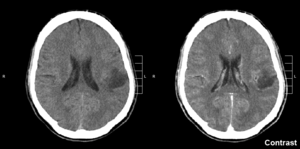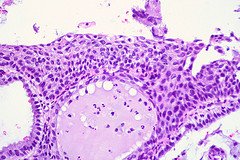Rice University bioengineers and physician-scientists at Baylor College of Medicine and Texas Children’s Hospital have successfully destroyed tumors of human brain cancer cells in the first animal tests of a minimally invasive treatment that zaps glioma tumors with heat. The tests involved nanoshells, light-activated nanoparticles that are designed to destroy tumors with heat and avoid the unwanted side effects of drug and radiation therapies.
The results of the new study are available online in the Journal of Neuro-Oncology. The researchers reported that more than half of the animals that received the nanoshell treatment for glioma tumors had no signs of cancer more than three months after treatment.
“This first round of in vivo animal tests suggests that photothermal therapy with nanoshells may one day be a viable option for glioma patients,” said study co-author Jennifer West, the Isabel C. Cameron Professor of Bioengineering at Rice and chair of Rice’s Department of Bioengineering. West cautioned that follow-up work in the laboratory is needed before any human testing of the therapy can begin. She said human clinical trials of nanoshell phototherapy for glioma are likely at least a year away.
Glioma is among the most aggressive and difficult-to-treat of all brain cancers. Fewer than five percent of glioma patients survive beyond five years. The disease is particularly difficult to treat because glioma tumors are often highly invasive and inoperable.










